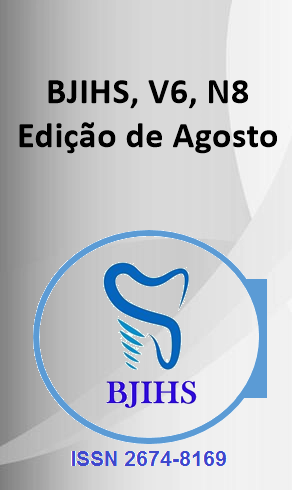Abstract
Objective: This study aimed to review and synthesize current knowledge on the diagnosis and treatment of erysipelas and cellulitis, highlighting the differences between these infections and evaluating best clinical practices. Methodology: A systematic search was conducted in the PubMed database using specific terms related to erysipelas, cellulitis, diagnosis, and treatment. Of the 200 articles initially found, 10 studies were selected after applying rigorous inclusion and exclusion criteria. Results: Differentiating between erysipelas and cellulitis is essential due to their distinct etiologies. Laboratory parameters such as C-reactive protein (CRP) and white blood cell counts proved effective in differential diagnosis. The practice of blood cultures in elderly patients with cellulitis revealed a high rate of bacteremia, justifying its use in certain cases. In treatment, the review did not find a clear superiority of any specific antibiotic, suggesting that targeted antibiotics are generally effective. Additionally, factors such as tinea pedis and anemia were observed to prolong hospitalization, and the recurrence of erysipelas was associated with factors such as lymphedema and obesity. Conclusions: Clinical practice should consider the judicious use of antibiotics and the need for preventive management in patients at risk of recurrence, thereby improving prognosis and quality of life for affected patients.
References
BRINDLE, R.; WILLIAMS, O. M.; BARTON, E.; FEATHERSTONE, P. Assessment of Antibiotic Treatment of Cellulitis and Erysipelas: A Systematic Review and Meta-analysis. JAMA Dermatology, v. 155, n. 9, p. 1033-1040, 2019.
DRERUP, C.; EVESLAGE, M.; SUNDERKOETTER, C.; EHRCHEN, J. Diagnostic value of laboratory parameters for the discrimination between erysipelas and limited cellulitis. Journal der Deutschen Dermatologischen Gesellschaft, v. 18, n. 12, p. 1417-1424, 2020.
HALI, F.; BELANOUANE, S.; ZAROUALI OUARITI, K.; SODQI, M.; CHIHEB, S. Erysipelas of the leg: A cross-sectional study of risk factors for recurrence. Annales de Dermatologie et de Vénéréologie, v. 149, n. 2, p. 119-122, 2022.
KARAKONSTANTIS, S. Is coverage of S. aureus necessary in cellulitis/erysipelas? A literature review. Infection, v. 48, n. 2, p. 183-191, 2020.
KORECKA, K.; MIKIEL, D.; BANASZAK, A.; NENEMAN, A. Fungal infections of the feet in patients with erysipelas of the lower limb: is it a significant clinical problem? Infection, v. 49, n. 4, p. 671-676, 2021.
LI, A.; WANG, N.; GE, L.; XIN, H.; LI, W. Risk factors of recurrent erysipelas in adult Chinese patients: a prospective cohort study. BMC Infectious Diseases, v. 21, n. 1, 2021.
ŁYKO, M.; KACZMAREK, M.; NEKRASOVA, P.; HRYNCEWICZ-GWÓŹDŹ, A.; MAJ, J.; JANKOWSKA-KONSUR, A. What factors affect the length of hospitalization in patients with erysipelas? A 10-year retrospective study of patients hospitalized in Lower Silesia, Poland. Advances in Clinical and Experimental Medicine, v. 30, n. 9, p. 981-985, 2021.
RODRIGUES, M. A.; CAETANO, M.; AMORIM, I.; SELORES, M. Dermo-Hipodermites Bacterianas Agudas Não Necrotizantes: Erisipela e Celulite Infeciosa. Acta Médica Portuguesa, v. 34, n. 3, p. 217-228, 2021.
STEVENS, D. L.; BRYANT, A. E. Streptococcus pyogenes: Impetigo, Erysipelas, and Cellulitis. In: FERRETTI, J. J.; STEVENS, D. L.; FISCHETTI, V. A. (Ed.). Streptococcus pyogenes: Basic Biology to Clinical Manifestations. 2nd ed. Oklahoma City (OK): University of Oklahoma Health Sciences Center, 2022.
TANIGUCHI, T.; TSUHA, S.; SHIIKI, S. et al. High Yield of Blood Cultures in the Etiologic Diagnosis of Cellulitis, Erysipelas, and Cutaneous Abscess in Elderly Patients. Open Forum Infectious Diseases, v. 9, n. 7, 2022.
YAMAOKA, M.; KANZAWA, Y.; TATEHARA, S. et al. Recurrent erysipelas led to diagnosis of hereditary hemorrhagic telangiectasia. Infezioni in Medicina, v. 30, n. 1, p. 129-133, 2022.

This work is licensed under a Creative Commons Attribution 4.0 International License.
Copyright (c) 2024 Georgia Valente, Bruna Barbosa Silva, Camila Marconatto Modelli, Angelica Rodrigues Mendes Medeiros, Tamiris Rosa Romer, Francisco Missiel Carvalho dos Santos, Letícia Marques, Amanda Gonsalves Martins da Cunha , Paulo Alexandre Rodrigues Rocha, Paola Gageiro Pinto Russo, Melissa Garcia Silva Saut, Murillo Henrique Malfatti de Paula
